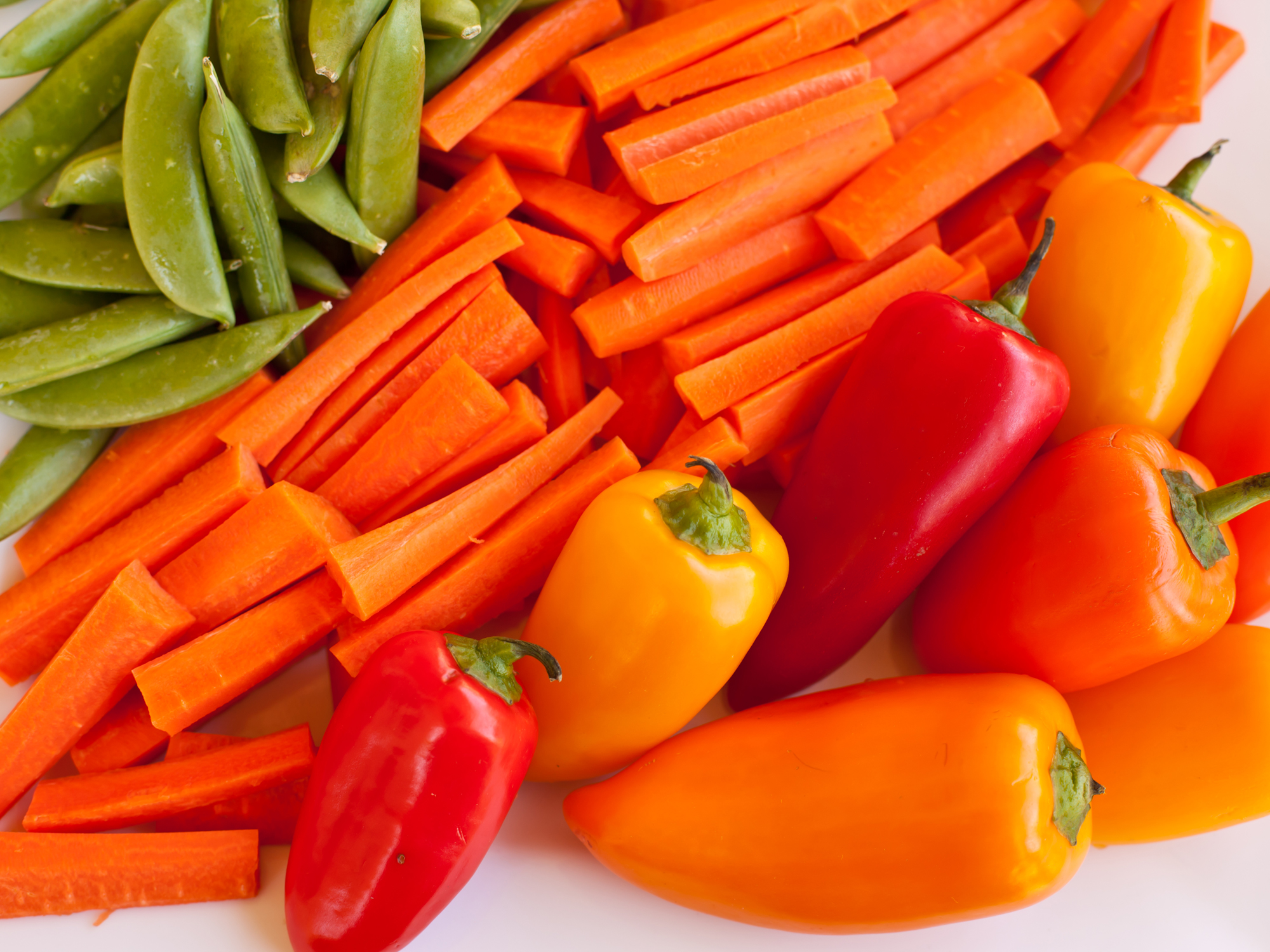Get Easy Health Digest™ in your inbox and don’t miss a thing when you subscribe today. Plus, get the free bonus report, Mother Nature’s Tips, Tricks and Remedies for Cholesterol, Blood Pressure & Blood Sugar as my way of saying welcome to the community!
Triple your disease protection with carotenoids

Walking through the fresh food section of the grocery store brings with it a visually appealing experience filled with the colors of the rainbow.
Out of the crowd shines the vibrant red, yellow and orange tones. And have you ever wondered how they manage to achieve these vibrant shades?
It’s all due to carotenoids…
Carotenoids are the pigments responsible for the bright colors of fruits and vegetables. But more than giving them their beautiful hues, carotenoids are powerful antioxidants with a serious capacity to scavenge free radicals and protect your body’s cells and tissues from oxidative damage.
There are six major carotenoids — beta-carotene, alpha-carotene, beta-cryptoxanthin, lutein, zeaxanthin and lycopene. And you’ll be amazed to discover that these carotenoids provide some seriously important health benefits…
Protect your eyesight
Carotenoids can help protect your eyes against one of the leading causes of blindness, a condition called Age-Related Macular Degeneration (AMD).
In a large study following a collective of 102,046 participants for 24-26 years, higher consumption of two carotenoids (lutein and zeaxanthin) was shown to lower the risk of developing advanced AMD by 41 percent.
Lutein and zeaxanthin have the ability to stand guard and absorb a substantial amount of the blue light that causes macular damage. And the antioxidant properties of these carotenoids also shield the eyes from the oxidative effects after blue light exposure has already occurred.
Researchers suggest you need to consume at least 6 mg of carotenoids each day to gain these benefits. And you can easily do this by eating one sweet corn cob and one cup of summer or winter squash.
Prevent osteoporosis
Due to hormonal changes that occur during menopause, women over 50 are at greater risk of bone loss and osteoporosis. Thankfully, beta-cryptoxanthin is a carotenoid that can help prevent both these outcomes from occurring…
Beta-cryptoxanthin (found in peppers, pumpkin, spinach, papaya and tangerine) works to inhibit osteoclast cells from breaking down bone tissue in your body.
In fact, when researchers examined 457 postmenopausal women, those with the highest levels of the carotenoid beta-cryptoxanthin in their blood had a 93 percent lower risk of osteoporosis.
Another study found that out of 946 participants, those who consumed a higher amount of carotenoids (23.7 mg per day) had a 51 percent lower risk of hip fractures than those who consumed the lowest amount of carotenoids (7.3 mg or less per day).
To put these numbers into perspective, let’s note that consuming just one cup of spinach (13.8 mg) and drinking one cup of carrot juice (22 mg) would put you well over the 23.7 mg daily goal for carotenoids that you just saw above.
Combat cardiovascular disease
Carotenoids have the unique ability to become soluble in both fat and water, which means they can circulate in lipids, cholesterol and fats in your body. This means carotenoids have the unique ability to directly influence arteries, decreasing thickness and stiffening that may lead to the development of atherosclerosis, one of the most common types of heart disease.
And according to researchers, the ability of carotenoids to reduce oxidative stress and inflammation has the potential to cut your risk of coronary heart disease by 12 percent, and your risk of stroke by 18 percent!
All you have to do to gain all the benefits that carotenoids have to offer is shop smart — head to the fresh produce section and fill your cart with brightly colored vegetables.
Top 10 carotenoid-rich foods
- Carrots
- Tomato
- Pumpkin
- Kale
- Vegetable juice
- Collards
- Spinach
- Sweet potato
- Turnip greens
- Apricots
Editor’s note: There are perfectly safe and natural ways to decrease your risk of blood clots including the 25-cent vitamin, the nutrient that acts as a natural blood thinner and the powerful herb that helps clear plaque. To discover these and other secrets of long-lived hearts, click here for Hushed Up Natural Heart Cures and Common Misconceptions of Popular Heart Treatments!
Sources:
- Xavier A, et al. Carotenoids as a source of antioxidants in the diet. — Subcellular Biochemistry. 2016;79(1):359-375.
- Carotenoids — Oregonstate.edu. (2014). Linus Pauling Institute. Retrieved 25 August, 2017.













